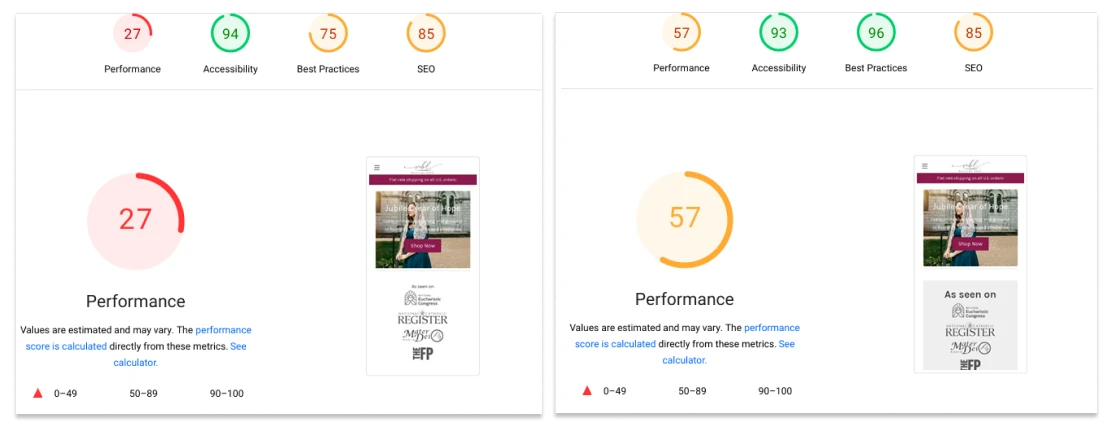
eCommerce website migration is one of the most high-risk moments for any online business—especially when it comes to SEO. Whether you’re switching platforms, redesigning your store, or consolidating multiple sites, one small mistake can wipe out years of SEO gains. Losing rankings during migration doesn’t just hurt your visibility. It can slash your website traffic and sales for months or longer.
The silver lining? With the right strategy, migration can be an opportunity—not just a risk. As an SEO agency experienced across platforms, we’ve seen firsthand what happens when migration goes wrong. Many clients have come to us after a previous agency missed critical steps, and they paid the price in lost revenue. In this guide, we’ll break down the most common SEO pitfalls during eCommerce website migrations and give you clear, actionable strategies to protect your search presence and revenue. If you’re a business owner or marketing manager planning a migration, these tips will help you move forward with confidence.
Failing to Plan for SEO From Day One
One of the biggest mistakes in eCommerce website migration is waiting too long to bring SEO into the process. Many businesses focus on web design, development, or platform features first—only to realize, too late, that they’ve ignored the foundation of their search rankings. Involving SEO specialists from the very beginning is critical. When SEO isn’t considered early, you risk launching with broken links, lost rankings, and wasted resources on fixes that could have been avoided.
Actionable Tip:
Before your migration starts, create a detailed checklist that covers technical, content, and SEO tasks. Map out every URL, plan your redirects, and set benchmarks for success. Early planning prevents mistakes that are difficult—and sometimes impossible—to fix after launch.
Not Mapping and Redirecting Old URLs
When you migrate your eCommerce website, changes in your platform, URL structure, or even product categories often result in new URLs. If you don’t map and redirect your old URLs to their new destinations, you risk more than a few broken links. You lose hard-earned link equity, send visitors to 404 error pages, and can see your rankings drop almost overnight. Search engines treat broken or orphaned pages as a signal that your site isn’t trustworthy or well-maintained.
This isn’t just a theoretical risk—it happens all the time. For example, Today’s Closeout recently migrated to a new platform using another agency. Instead of carefully mapping old URLs to their new counterparts, the agency implemented over 15,000 incorrect redirects. As a result, valuable backlinks and indexed pages lost their authority, and the site nearly vanished from Google’s results. Organic traffic and sales plummeted, and recovery took months of extra work.
Actionable Strategies:
- Audit and export a complete list of all current URLs before migration.
- Map every old URL to its new destination—no shortcuts.
- Use permanent 301 redirects, never temporary 302s or meta refreshes.
- Test all redirects before launch using a crawl tool like Screaming Frog.
A thorough redirect plan doesn’t just protect your search visibility—it preserves your brand’s reputation and the user experience your customers expect.
Overlooking Internal Linking and Navigation

During a website migration, it’s easy to overlook the web of internal links connecting your pages. Broken internal links, outdated navigation menus, and missing breadcrumbs are common issues when URLs change or site structures shift. These mistakes don’t just frustrate users—they confuse search engines, waste valuable link equity, and cause crawl errors that hurt your rankings.
If visitors land on dead ends or struggle to find what they need, they’ll leave your site for a competitor. Likewise, if search engines can’t properly follow your internal links, your most important pages may stop ranking or even drop out of the index.
Actionable Steps:
- Crawl your site for all internal links and anchor text before and after migration.
- Update navigation menus, breadcrumbs, and internal links to reflect your new URL structure.
- Run a site crawl immediately after launch to catch and fix any missed or broken links.
Ignoring Mobile and Page Speed Issues
Site migrations present a valuable opportunity to address mobile usability and site speed. Unfortunately, many businesses overlook these essentials during the transition. New themes, added scripts, or platform changes can accidentally slow your site or break mobile layouts, resulting in lost traffic and lower conversion rates.
If your updated site isn’t fast and easy to use on every device, customers won’t stick around—and Google will notice. Both mobile-friendliness and page speed are ranking factors, so issues here can hurt your visibility just as much as broken links or missing redirects.
We saw this firsthand with Veils by Lily. Before their optimization, the mobile site was slow and frustrating for users. Total Blocking Time was 570ms, keeping key elements from loading quickly, and the Speed Index was 8.8 seconds. After our work, Total Blocking Time dropped to 100ms, Speed Index improved to 7.2 seconds, and images loaded faster with optimized rendering. We also removed excessive scripts and prioritized essential content, so the most important parts of the site always appear first. The result: customers now browse and buy on mobile without delays, boosting engagement, lowering cart abandonment, and driving more sales.
 Veils By Lily Speed optimization
Veils By Lily Speed optimization
Actionable Advice:
- Test your staging site for mobile responsiveness and page speed before launching.
- Compress images and streamline scripts to keep load times fast.
- Use Google’s Mobile-Friendly Test and PageSpeed Insights to check performance before and after launch.
Forgetting to Re-Submit Your Site to Search Engines
Many businesses overlook one of the final, crucial steps after migrating their eCommerce site: updating and re-submitting sitemaps to search engines. If you skip this, Google and Bing may not index your new URLs promptly, which can delay traffic recovery and lead to missed sales.
Actionable Steps:
- Submit your updated XML sitemap in Google Search Console and Bing Webmaster Tools immediately after launch.
- Closely monitor crawl errors, indexing status, and organic traffic for several weeks post-migration.
- Set up alerts for 404 errors and sudden ranking drops so you can catch and address problems early.
Not Monitoring SEO Performance Post-Migration
A successful migration doesn’t end the day your new site goes live. Too many businesses make the mistake of assuming everything will work as planned, only to discover traffic and rankings slipping weeks later. Ongoing monitoring is essential to catch problems early and protect your investment.
What to Watch:
- Track keyword rankings, organic traffic, and conversions daily in the first few weeks.
- Monitor for crawl errors, especially 404s and redirect chains.
- Compare pre- and post-migration data to spot issues fast.
Set regular SEO health checks at 30, 60, and 90 days after launch. This ensures you catch drops in performance before they cause lasting damage. React quickly to any declines—small problems fixed early prevent bigger setbacks later.
Conclusion & Next Steps
A successful eCommerce migration is never accidental. Careful SEO planning protects your rankings, preserves your brand’s visibility, and ensures you don’t lose momentum during a high-risk transition. Every step matters, from involving SEO specialists at the very beginning to ensuring every redirect, meta tag, and internal link is accounted for. It’s not enough to just launch your new site and walk away—ongoing monitoring after launch is critical to catch any issues early and safeguard your traffic and revenue.
If you’re preparing for a eCommerce website migration, use the strategies above to avoid common pitfalls and keep your business growing. And if you’re looking to migrate to a new platform, contact MAKDigital for a professional SEO migration audit or to request a detailed migration checklist. Take the guesswork out of your next move—protect your investment and set your site up for long-term success.
Eashan is an SEO wizard who turns search rankings into success stories. With a knack for data-driven strategies and creative optimization, he helps businesses shine online. From crafting compelling content to mastering algorithms, he's your go-to for growing visibility and driving results. When not analyzing keywords, you’ll find him exploring trends to keep clients ahead in the digital race.

 Eashan Mehta
Eashan Mehta
